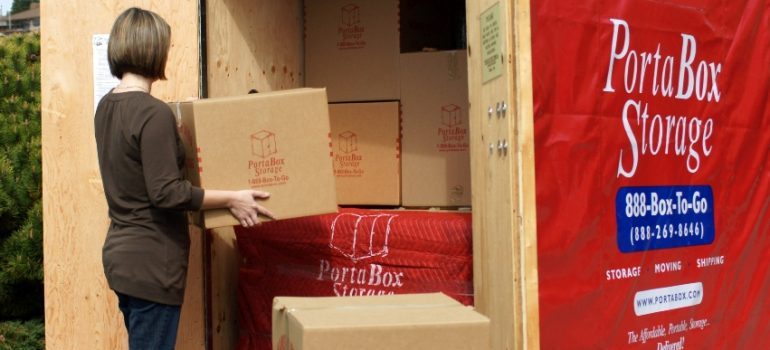Additional measures for protecting belongings in self storage
get a quote
Demand for self-storage units is growing as homeowners, renters, and businesses seek convenient ways to manage space. However, proper measures for protecting belongings in self storage are essential to preserve and protect them. Beyond choosing a reputable storage units North Seattle facility, specific steps can safeguard belongings from damage, theft, and environmental factors. Start planning your storage strategy with our tips.
Have a clear idea of the vulnerabilities of stored items
Before you store items, evaluate their potential vulnerabilities. Wood furniture can warp in fluctuating humidity, electronics may fail under extreme temperatures, and textiles are prone to mold in damp conditions. If you’re storing sensitive items, the first step in mitigating these risks is selecting a storage facility equipped with climate control.
Evaluate the structural integrity of the storage unit, inspecting for leaks, pests, or gaps that could allow external elements to compromise the space. In addition to ensuring your storage provider meets high standards, focus on the condition of your items before storage.

Clean and dry all materials thoroughly to prevent mold and mildew from developing while in a Ballard self storage unit. Wooden surfaces can benefit from a protective wax coating, while electronics should be packed in anti-static materials. Also, store textiles and papers in sealed, airtight containers to block out moisture.
Strategies for optimizing storage safety
Organizing and packing your items correctly inside the storage unit adds another layer of protection. Proper planning and execution prevent long-term damage and ensure easy access:
- Use durable plastic bins instead of cardboard boxes to protect against moisture and pests.
- Elevate all items on pallets or shelving to guard against flooding.
- Wrap furniture and appliances with breathable materials such as cotton sheets to prevent scratching and allow airflow.
- Label containers clearly and create an accessible layout, leaving space for movement between items to avoid accidental damage during retrieval.
- Create a logical layout where you store heavy items at the base, with fragile or lighter goods stacked above.
- Leave walkable pathways between stacks to prevent accidents and make regular checks on your belongings more manageable.
Also, check on your storage periodically to address any emerging issues like leaks or pest infestations. Regular maintenance is as essential as preparation, ensuring stored items remain in the same condition as when you first packed them.
Secure the unit against unauthorized access
While storage facilities invest heavily in security, renters should take additional precautions. A strong, weather-resistant lock provides a solid defense against unauthorized access while a unit is at your property for loading. Disc locks or cylinder locks are often recommended for their durability and resistance to tampering. Avoid basic padlocks, as they are easier for thieves to bypass.
Insurance measures for protecting belongings in self storage
Despite preventive measures, unexpected events such as fires, natural disasters, or break-ins can still occur. Insurance coverage provides financial protection in these scenarios. Many storage facilities offer tailored insurance plans, but third-party options through renters’ or homeowners’ policies can sometimes be more comprehensive. Ensure the policy explicitly covers storage units and accounts for the total value of your items.

Innovative methods for safeguarding belongings in portable storage units
As you can guess, portable storage containers Seattle offers are designed to be transported, which subjects them to unique risks such as vibration, impact, and rapid temperature changes. Proper preparation is critical to ensuring your items remain secure and undamaged throughout the journey. Here are additional creative tips to optimize protection in portable storage scenarios.
Distribute weight evenly
An unbalanced load inside the unit can shift during transport, increasing the risk of items falling or the unit becoming unstable. Place heavier items at the bottom and distribute them evenly across the floor of the unit. Avoid stacking all heavy items on one side to prevent tipping during loading or transit. Use furniture sliders or dollies to move bulky items without straining.
Create a shock-absorbent foundation
Add a cushioning layer on the floor of the unit to absorb vibrations during transport. That can include thick moving blankets, foam panels, or even flattened cardboard. For fragile items, consider layering the foundation with high-density foam to provide additional shock absorption.
Stack strategically with an interlocking method
When stacking boxes, use an interlocking method similar to bricklaying. This technique improves stability by spreading the weight and creating a cohesive structure. Avoid stacking fragile items at the top unless they are light, and always secure stacks with straps or stretch wrap to prevent shifting.
Protect corners and edges
Furniture and appliances are particularly vulnerable at their corners and edges during transit. Use corner protectors made of foam, plastic, or rubber to prevent dents and scratches. For furniture with sharp corners, apply protective padding to prevent them from damaging other items during shifting.

Use tension rods or panels
You can install tension rods or adjustable cargo bars horizontally across the unit to secure stacked items and prevent them from toppling during transport. Alternatively, use wooden panels or sheets of plywood as separators between layers of items for added stability. These measures for protecting belongings in self storage also serve as an additional shield against impact.
Pack an essentials zone
Create an easily accessible section at the front of the unit for essential items you might need immediately upon arrival. You could include tools for unpacking, a flashlight, and a checklist of stored belongings. Packing this “essentials zone” minimizes the need to rummage through the unit upon reaching your destination.
Document the layout with photos
Take photos of the packed unit before it is picked up for transport to business storage Seattle recommends. This serves two purposes: it helps you remember the arrangement for efficient unpacking, and it provides evidence in case of disputes about the condition of items upon delivery.
Achieving optimal security for your stored items
Keeping items off-site requires thoughtful planning and creative measures for protecting belongings in self storage tailored to the challenges of transport. So, focus on proper packing techniques, strategic weight distribution, and innovative safeguards such as shock-absorbent layers and tension rods to minimize risks and keep your items secure. Such extra steps ensure that your possessions arrive at their destination intact, providing both peace of mind and the satisfaction of knowing your valuables are well cared for.
